This article originally appeared in Spanish at EuskalKultura.eus.
A history of the Gernika Battalion (Pointe de Grave, 1945).
When one of the authors of this blog, Guillermo Tabernilla, published the book Basque Combatants in World War II, we learned, for the first time, details of the Gernika Battalion that had not yet been treated by Basque historiography: its history of combat, its actions on the Médoc front, the conditions the battalion fought in, and the chronology and phases of its battles. We also learned the identity of those involved in the operations of liberty, fought on one of the forgotten fronts of the Second World War: the last pockets of German resistance scattered throughout the French Atlantic coast, where 100,000 German soldiers awaited the end of the war under the cover of their impressive fortifications.
This includes the fortress called by the Nazi occupiers Festung Gironde. It was actually two fortresses that straddled the mouth of the Gironde River (Royan and Pointe de Grave). Together, they brought the port of Bordeaux to a total standstill, causing the people of Gironde to suffer all kinds of shortages and hardships. Charles de Gaulle had made the decision to reconquer the area for the mere symbolism of recovering lost homeland, to secure a first victory on the Atlantic front. By the spring of 1945, the war was coming to an end and these operations were absolutely irrelevant. They led to an unjustifiable loss of life, not only among the combatants but also among the French civilian population itself. For example, the terrible bombardment of the coastal town of Royan cost 442 lives and hundreds of wounded.
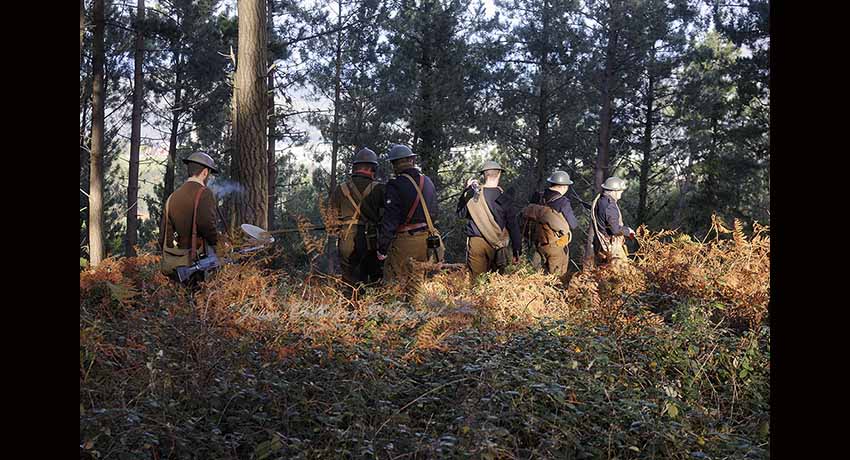
“Echoes of two wars, 1936-1945” aims to disseminate the stories of those Basques and Navarrese who participated in two of the warfare events that defined the future of much of the 20th century. With this blog, the intention of the Sancho de Beurko Association is to rescue from anonymity the thousands of people who constitute the backbone of the historical memory of the Basque and Navarre communities, on both sides of the Pyrenees, and their diasporas of emigrants and descendants, with a primary emphasis on the United States, during the period from 1936 to 1945.
THE AUTHORS
Guillermo Tabernilla is a researcher and founder of the Sancho de Beurko Association, a non-profit organization that studies the history of the Basques and Navarrese from both sides of the Pyrenees in the Spanish Civil War and in World War II. He is currently their secretary and community manager. He is also editor of the digital magazine Saibigain. Between 2008 and 2016 he directed the catalog of the “Iron Belt” for the Heritage Directorate of the Basque Government and is, together with Pedro J. Oiarzabal, principal investigator of the Fighting Basques Project, a memory project on the Basques and Navarrese in the Second World War in collaboration with the federation of Basque Organizations of North America.
Pedro J. Oiarzabal is a Doctor in Political Science-Basque Studies, granted by the University of Nevada, Reno (USA). For two decades, his work has focused on research and consulting on public policies (citizenship abroad and return), diasporas and new technologies, and social and historical memory (oral history, migration and exile), with special emphasis on the Basque case. He is the author of more than twenty publications. He has authored the blog “Basque Identity 2.0” by EITB and “Diaspora Bizia” by EuskalKultura.eus. On Twitter @Oiarzabal.
Josu M. Aguirregabiria is a researcher and founder of the Sancho de Beurko Association and is currently its president. A specialist in the Civil War in Álava, he is the author of several publications related to this topic, among which “La batalla de Villarreal de Álava” (2015) y “Seis días de guerra en el frente de Álava. Comienza la ofensiva de Mola” (2018) stand out.
The connection we maintain with the main preservers of the memory of the Gernika Battalion – Jon Ander Prieto, son of Lieutenant Andrés Prieto, and José María Tuduri, author of the essential 1996 documentary – has allowed us to continue a project that led to the formation of our association in 2013.
Last year, in the midst of the COVID-19 pandemic crisis, we dedicated three articles, along with corresponding videos, to the 75th Anniversary of that act in which the Basque government-in-exile cried out to the world its belligerence against totalitarianism: the formation its own military unit – the Gernika Battalion – within the Forces Françaises de l’Intérieur (French Forces of the Interior), or FFI.
Our Historical Recreation group has also been critical in perpetuating the memory of the Gernika Battalion, visually bringing the men of the battalion to life. With the power of images, they contribute to the preservation of our heritage. But, this must be accompanied by a truthful historical account based on access to sources, whether documentary or oral.
Among the first, we must highlight the documents generated by Andrés Prieto himself, archived in the Municipal Archive of Eibar. And, of the oral testimony, the interviews conducted by both Mikel Rodríguez and José María Tuduri have proven invaluable.
Thanks to the kindness of Tuduri, we have had access to two interviews that were not used for his documentary and which include the interesting story of two German prisoners who, after deserting their lines, ended up forming part of the Gernika Battalion during the period in which the battalion remained at the Médoc front, clearing out land mines during the attack on Cota 40 (or Level 40, a geographical point on the military charts) on April 14, 1945, the day the offensive began.
It is a harsh story that seems to connect with others that have recently become popular in the cinema, such as the Danish film Land of Mine, which reflects only a small – but very representative – part of that reality in which prisoners of war are forced to perform tasks that ran against the principles of the Geneva Convention. However, the very dynamics of the battle for the liberation of the Médoc and the violence it generated during the scant period of a week allows us to understand these and other issues that we have treated in previous publications. Without a doubt, the Gallic forces would otherwise have been ignorant of the minefields that they had to cross to reach the heart of the Nazi fortress in the town of Soulac-sur-Mer.
That, and the haste with which objectives had to be met after the intense preparatory bombardment by US aviation and the Naval Forces of Free France, partially explain the treatment of those prisoners. But the case of the two Germans in the Gernika Battalion has a different nuance, as they were not mistreated by the gudaris. However, we are getting ahead of ourselves and we’d better start at the beginning.
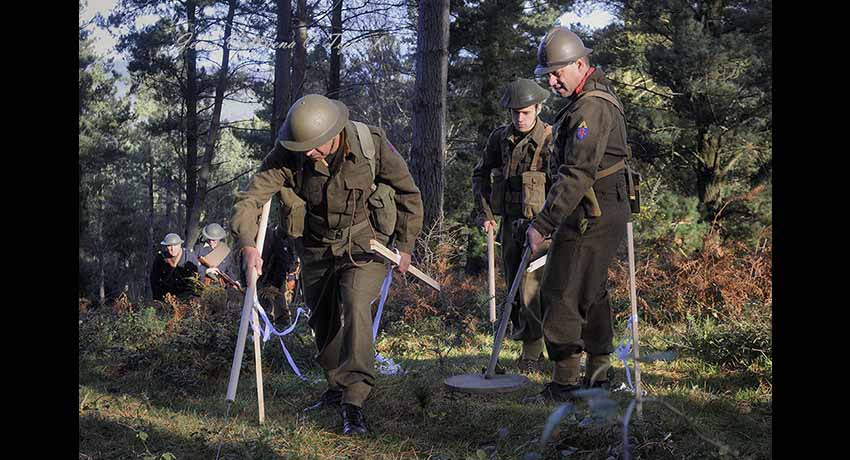
The arrival of the Gernika Battalion to the combat zone occurred on March 22, 1945; after disembarking from the train at Lesparre – the last station before reaching the Médoc front, led by Colonel Jean de Milleret “Carnot” and his deputy, Lieutenant Colonel Yvan Reverdy – Kepa Ordoki‘s men, who were accompanied by the Spanish anarchists of the Libertad o Santos Battalion, relieved the French from the Lot Regiment, which despite its pompous name were nothing but partisan troops hastily militarized under the umbrella of the FFI.
In fact, the Gernika Battalion was itself not a real a battalion, since their number never exceeded one hundred at the front. (A battalion usually has 300-1000 soldiers.)
There, they found an environment of swamps and sandy beaches with copses of pine trees in which the Germans had established numerous defensive posts linked together and protected by dense minefields. These, however, did not prevent the infiltration of their own forces nor the desertions of a garrison that was already showing signs of being morally defeated after months of isolation at the end of the cold winter of 1944-45.
This was the case for two young Germans who were about 17 years old when they crossed the front that the Gernika Battalion was defending.
José María Tuduri recalled that Loren Burgoa, a boy like them, spoke of their obsession with going to the brothels of Bordeaux, which he found hilarious. Thus, these boys were admitted to the battalion and, because they were the same age, they became very good friends with the group of young soldiers from Ondarroa. That is, until the day of the offensive arrived and the Germans joined the deminers who had to open a corridor to let the gudaris advance: a team led by French specialists who, obviously, were also risking their lives [1].
Tuduri recorded on video the testimony of Deunoro Totorika, gudari of the Gernika Battalion, who referred to the two deserters as Jon and Iñaki (as they were called) in part of the interview. According to him, the Germans volunteered for demining duty and then stayed with the battalion for the entire battle of Pointe de Grave, after removing the insignia from their uniforms [2].
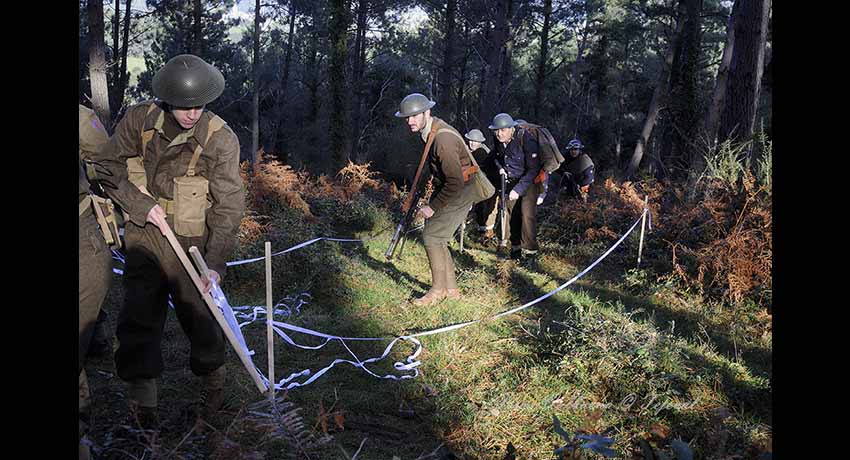
Other interviews collected by Mikel Rodríguez refer to these deserters. Vicente Aizpuru spoke of a group of six men, but said that they could be “Romanian or Czech,” while Jokin Atorrasagasti stated that they were German and young and that he taught one to say “Gora Euskadi Askatuta!” [3].
Pantxo Etxebarria spoke of three young prisoners “one who was 16 years old and the other 17 […] who were in charge of searching for the mines. With the gadgets of searching for mines they found a path. We kept them for a long time, because Ordoki and all the officers of the battalion sympathized with these three German boys. They changed their names, we gave them Basque names. But according to the law they had to be tried and taken to the French command. Later we took more prisoners, a lot” [4].
Javier Brosa and Jesús Blanco believed that the youth of these German soldiers made the Basques take pity on them and protect them. Brosa recounted that they were there “for a few days, helping us in the kitchen. We became fond of them because they were children.” Blanco expounded a little more about the circumstances in which they were transferred to the FFI: “We took the kids with us. If they were poor wretches, so were we, we were all deep in this mess! I don’t know if it was Ordoki’s idea or whose idea, but we kept them, we dressed them with one man’s jacket and another’s pants and we kept them around for a few days. We gave them Basque names, like Sabino Arana, but here, as everywhere, there are people who can’t let things be, so one day the French came and took them away” [5].
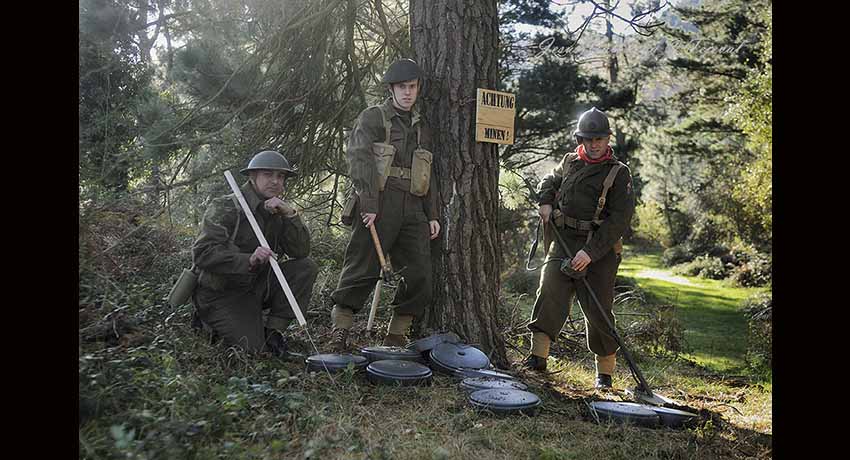
Returning to the demining issue, perhaps the most clarifying testimony is that of Dr. Claude Lesca, the battalion doctor, who was recorded on video by Tuduri and translated from French for us by Jon Ander Prieto. According to him, the Gernika Battalion was not the only one that hosted deserters, since there was a battalion that, in addition to Germans, had Italians and “soldiers from Central Europe.”
The task of the two German prisoners during the assault on Cota 40 was to walk along the sides of the cleared area, carrying a piece of white cloth to mark it.
When the mines began to explode, Lesca went to help the wounded, finding that the French officer who led the team had died. While he was treating one of the young Germans, there was another explosion that caused him to fall on the young man to protect him, which immediately unleashed the panic of the prisoner, who feared for his life to the point that he believed that Lesca was trying to kill him by strangulation or crushing. He told the doctor “No kaput, no kaput,” which made him laugh a lot [6].
When the mine detectors stopped working, according to Andrés Prieto Deia, they had “to search for the mines by prodding the ground with bayonets, millimeter by millimeter” [7].
That day, April 14, 1945, the Gernika Battalion counted 4 dead and 18 wounded, and their number was reduced to 53 able men for the battle. But, it managed to recover and successfully complete the last of its objectives: the assault on the battery of Les Arros five days later, where there occurred a reprehensible act that must be contextualized in the circumstances of combat [8].
On April 20, the military operations of Pointe de Grave ended with the surrender of the last German defenders.
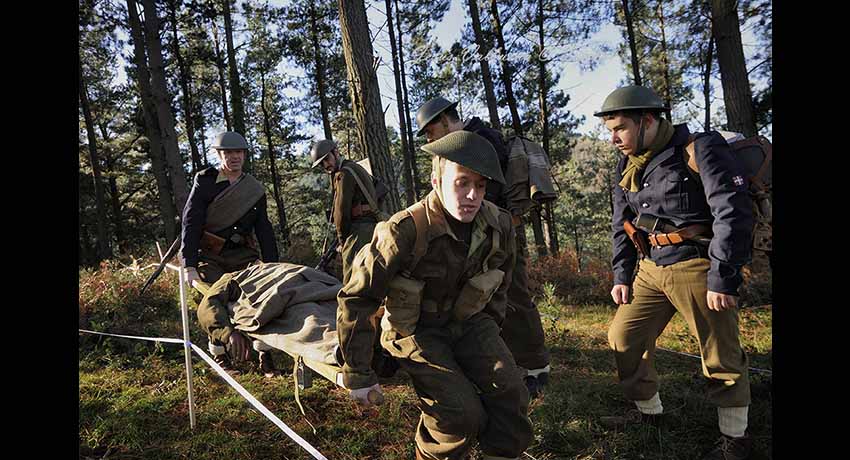
What happened to the two German boys after they were handed over to the French troops?
The truth is that we don’t know. Despite a letter of recommendation from Father Iñaki Aspiazu, written for them at the end of the battle for the liberation of the Médoc, Lieutenant Prieto told Tuduri that this would not help them much in the face of possible reprisals by French soldiers. It wouldn’t help them even if they were equipped with battalion garments and had removed the insignia from their German uniforms; it would not absolve them in those moments when anyone could be accused of spying and summarily executed.
Volunteers or prisoners forced to clear mines? Victims of the cruelty of war? In any case, the interesting story of the two Germans from the Gernika Battalion shows us the difficulty of dealing with oral sources – already confusing – and interpreting them properly in the context of war, which brings out the worst in humanity to the point that things are not always what they seem, are they?
Judge for yourself. We are content to contribute, on this 76th Anniversary of the battle of Pointe de Grave, new insight into the history of the Gernika Battalion.
[1] Testimony of José María Tuduri to the authors in 2021.
[2] Interview by José María Tuduri with Deunoro Totorika, deposited among the documentary materials in the Basque Film Library and provided to the authors.
[3] Mikel Rodríguez. (2003). ‘Memory of the Basques in the Second World War’. Pamiela: Pamplona, pp. 198-202.
[4] Ibid., P. 207.
[5] Ibid, pp. 211 and 216. Pako Eizaguirre also recalled that the German prisoners who had joined the battalion lived “for a long time with us, but I don’t know if they ended up in the hands of the French, who were interested in taking them, I suppose to shoot them” (Ibid. , p. 214). Joseba Barandiaran recalled that “those days we took many German prisoners, the two or three youngest, we hid them with us and they helped us to locate and mark the minefields” (Ibídem, p. 225).
[6] Interview by José María Tuduri with Claude Lesca, deposited among the documentary materials at the Basque Film Library and provided to the authors.
[7] ‘Deia’ dated 04/25/1978.
[8] Guillermo Tabernilla and Ander González. (2018). ‘Basque fighters in the Second World War’. Madrid: Desperta Ferro. P. 54
Collaborate with ‘Echoes of two wars, 1936-1945.’
If you want to collaborate with “Echoes of two wars” send us an original article on any aspect of WWII or the Civil War and Basque or Navarre participation to the following email: sanchobeurko@gmail.com
Articles selected for publication will receive a signed copy of “Combatientes Vascos en la Segunda Guerra Mundial.”
Discover more from Buber's Basque Page
Subscribe to get the latest posts sent to your email.

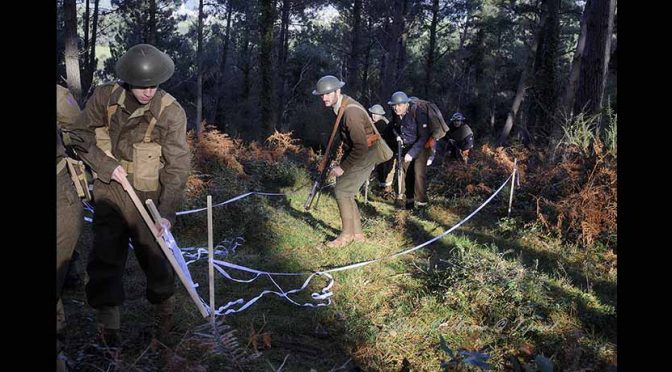

Greetings,
this article brought back memories! I remember very well all the bombing and the cement fortification along the Atlantic coast. There are still remnants visible when the time is very low. The French government tried to dynamite them to no avail. 6-8ft of solid concrete. I remember them as we did go to the beach–Mimizan and other places.
As I read the article many times I understood why my father hired Spanish Basque and the bond he had with them–as well as with my uncle Luis from Pampelune. My father had joined the French resistance. He and they would never talk about it except when they were together. Often they stayed silent–lost in their thoughts and comfortable with one another. When someone approached the group, they would stop their conversation and make small talk with whom sat with them. There was an invisible wall no one could penetrate.
Thank you for posting the article.
Monique